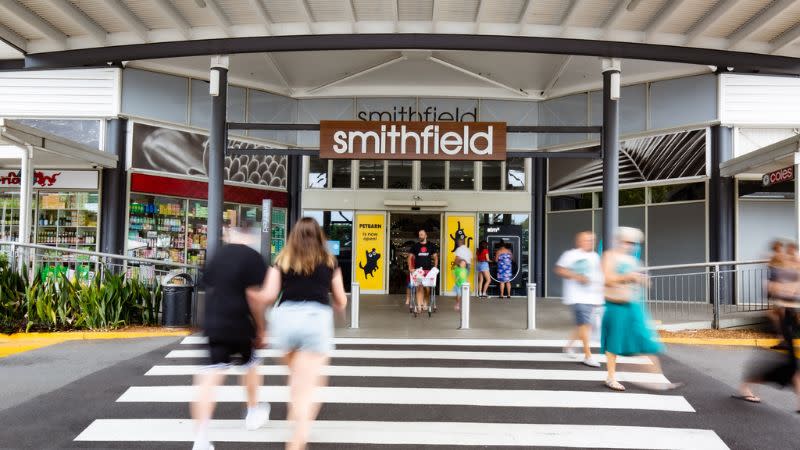Resources
Newsletter
Stay up to date and with the latest news, projects, deals and features.
Subscribe
Investment in shopping centres in Australia will grow by half again by 2025, according to research.
CBRE’s latest Australian Shopping Centres research report has forecasted investment in the sub-sector will grow between 2023 and 2025 from $4.2 billion to an estimated $6.3 billion as tailwinds after investment hit a cyclical low last year.
CBRE Pacific Head of Retail Capital Markets Simon Rooney said this would be buoyed by the recent reset of asset values and the sector’s positive underlying fundamentals.
“Private capital has opportunistically and strategically dominated investment activity, while institutional capital has essentially sat on the sidelines during this period of pricing in shopping centres during the past two years,” he said.
“Global institutional investors have slowly re-entered the Australian market primarily via domestic managers, a trend we see increasing this year, along with domestic institutional capital at the back end of this year.
“The speed and volume in deployment will be heavily dependent on pricing, quality and number of opportunities that come into play.”
Rooney said that the relatively high returns and recalibration in values for high-quality assets were “simply too compelling”, reinforced by market-adjusted income streams and robust tenancy performance, providing attractive inbuilt growth.
“The lack of recent and forecasted competing supply has also been a key contributing factor to asset performance and investor demand,” he said.
The report also identified mixed-use redevelopment opportunities—including building apartment towers—where centres are on larger sites, close to transport in areas with high residential rents.
CBRE Research is forecasting retail sales will grow to $500 billion by the end of the decade underpinned by a triple boost of population growth, jobs growth and income growth.
CBRE Pacific head of research Sameer Chopra said other positive drivers for the sector would be limited new supply and a continued improvement in shopping centre vacancy rates, which were currently sub 5 per cent.

“Future supply of shopping centre developments is expected to be less than half of the historical average over 2024-2028 and we anticipate further vacancy rate compression as city centre performance improves,” Chopra said.
While CBRE is forecasting e-commerce to grow from 13 per cent to 15 per cent between 2024 and 2027, the report highlights that shopping centres have become more defensive, with 94 per cent of centres having at least two daily-needs supermarkets, representing around 11 per cent of gross lettable area.
Omni-channel click and collect/return facilities are also expected to assist with ongoing shopping centre visitation as well, with scope for rents to grow as vacancy tightens and shopping centres continue to generate foot traffic.
The report highlighted shifting trends in retail spending and occupancy costs.
“Retail categories that relate to looking good, feeling good and travelling well have taken an extra 20 per cent share of wallet during the past two decade,” Chopra said.
“Our data also shows that occupancy cost ratios (OCRs) have declined during the past five years.
“For categories such as women’s fashion, cafe/restaurant and mini-majors, OCRs are 15 per cent lower today than in 2019, due to re-based rents and higher retail sales.”

Acquisitive private equity group Alceon Queensland and its long-term partner, CPRAM, have swooped on the third-largest shopping centre in Cairns in the state’s tropical far north.
They have secured Smithfield Shopping Centre, primely positioned in the rapidly growing northern corridor about 14km north-west of the Cairns CBD.
The recently settled $138-million purchase from government-owned body NSW Treasury Corporation (TCorp) reflected a building rate of slightly less than $4000 a square metre.
Smithfield Shopping Centre comprises a gross lettable area of 34,786sq m and is one of the best performing retail centre’s in the region. Built in 1986, it was refurbished significantly in 2017-18.
The centre sits on a 12.4ha site on a high-exposure corner at the junction of the Captain Cook and Kennedy highways and has an existing development approval to add another 4400 square metres.
It has four anchor tenants— supermarket giants Coles and Woolworths, Kmart, and Event Cinemas—eight mini-majors and more than 90 specialty shops with parking for 1500 vehicles.
“Cairns is an attractive investment proposition for Alceon and CPRAM, with the city experiencing a peak in gross regional product at $10.3 billion and its lowest unemployment rate on record of about 4 per cent,” Alceon Queensland executive director Todd Pepper said.
“In particular, the northern corridor, which is home to James Cook University, is enjoying a growth spurt with more than 2600 houses being added to its catchment area, which is forecast to have 1.8 per cent a year population growth rate in the primary trade area up to 2026.”

CPRAM managing director Olivier Sicouri said the asset also came with an attractive WALE (weighted average lease expiry) of about five years.
“It presents an opportunity through active management to substantially increase its income, which we expect will make it an attractive investment in terms of tax-effective income and capital growth,” he said.
Pepper added that regional retail assets typically offered higher returns than capital city centres but rarely were they institutional grade assets in growth corridors with development potential such as Smithfield Shopping Centre.
“A bonus for Alceon, CPRAM and its investors is the centre’s value-add potential and history as an institutionally managed asset for more than 23 years, which are regularly renovated to stay in line with higher standards and regulations.”
The acquisition of Smithfield Shopping Centre takes Alceon’s real estate investments since its inception in 2010 to more than 480 totalling $8.8 billion across all major asset classes.
It follows its recent $73-million purchase of a 10-storey office/carpark building at 40 Tank Street in the Brisbane CBD from ASX-listed fund manager Charter Hall.